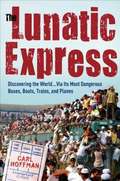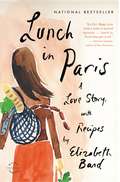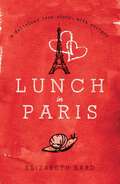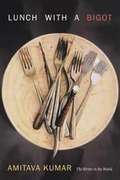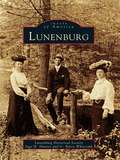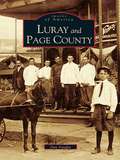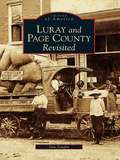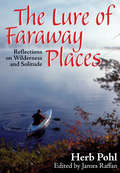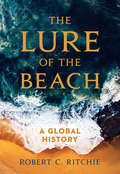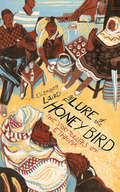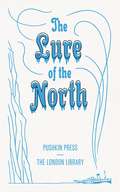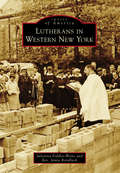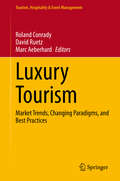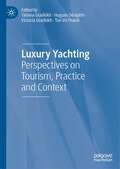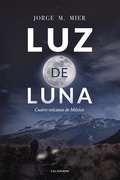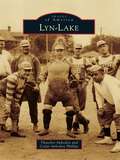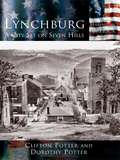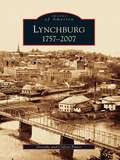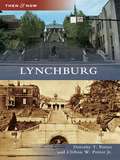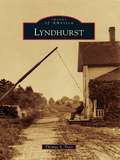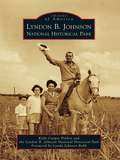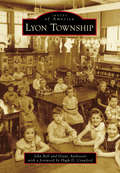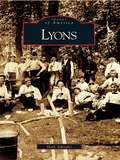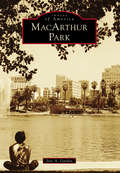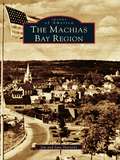- Table View
- List View
The Lunatic Express: Discovering the World … via Its Most Dangerous Buses, Boats, Trains, and Planes
by Carl HoffmanIndonesian Ferry Sinks. Peruvian Bus Plunges Off Cliff. African Train Attacked by Mobs. Whenever he picked up the newspaper, Carl Hoffman noticed those short news bulletins, which seemed about as far from the idea of tourism, travel as the pursuit of pleasure, as it was possible to get. So off he went, spending six months circumnavigating the globe on the world's worst conveyances: the statistically most dangerous airlines, the most crowded and dangerous ferries, the slowest buses, and the most rickety trains. The Lunatic Express takes us into the heart of the world, to some its most teeming cities and remotest places: from Havana to Bogotá on the perilous Cuban Airways. Lima to the Amazon on crowded night buses where the road is a washed-out track. Across Indonesia and Bangladesh by overcrowded ferries that kill 1,000 passengers a year. On commuter trains in Mumbai so crowded that dozens perish daily, across Afghanistan as the Taliban closes in, and, scariest of all, Los Angeles to Washington, D. C. , by Greyhound. The Lunatic Express is the story of traveling with seatmates and deck mates who have left home without American Express cards on conveyances that don't take Visa, and seldom take you anywhere you'd want to go. But it's also the story of traveling as it used to be -- a sometimes harrowing trial, of finding adventure in a modern, rapidly urbanizing world and the generosity of poor strangers, from ear cleaners to urban bus drivers to itinerant roughnecks, who make up most of the world's population. More than just an adventure story, The Lunatic Express is a funny, harrowing and insightful look at the world as it is, a planet full of hundreds of millions of people, mostly poor, on the move and seeking their fortunes.
Lunch in Paris: A Love Story, with Recipes
by Elizabeth BardIn Paris for a weekend visit, Elizabeth Bard sat down to lunch with a handsome Frenchman--and never went home again. Was it love at first sight? Or was it the way her knife slid effortlessly through her pavé au poivre, the steak's pink juices puddling into the buttery pepper sauce? LUNCH IN PARIS is a memoir about a young American woman caught up in two passionate love affairs--one with her new beau, Gwendal, the other with French cuisine. Packing her bags for a new life in the world's most romantic city, Elizabeth is plunged into a world of bustling open-air markets, hipster bistros, and size 2 femmes fatales. She learns to gut her first fish (with a little help from Jane Austen), soothe pangs of homesickness (with the rise of a chocolate soufflé) and develops a crush on her local butcher (who bears a striking resemblance to Matt Dillon). Elizabeth finds that the deeper she immerses herself in the world of French cuisine, the more Paris itself begins to translate. French culture, she discovers, is not unlike a well-ripened cheese-there may be a crusty exterior, until you cut through to the melting, piquant heart. Peppered with mouth-watering recipes for summer ratatouille, swordfish tartare and molten chocolate cakes, Lunch in Paris is a story of falling in love, redefining success and discovering what it truly means to be at home. In the delicious tradition of memoirs like A Year in Provence and Under the Tuscan Sun, this book is the perfect treat for anyone who has dreamed that lunch in Paris could change their life.
Lunch in Paris: A Delicious Love Story, with Recipes
by Elizabeth BardPart love story, part cookbook, Lunch in Paris is a forthright and funny story of falling in love with a Frenchman and moving to the world’s most romantic city. From gutting her first fish to discovering the French version of Death by Chocolate, Elizabeth finds that learning to cook and building a new life have a lot in common.
Lunch With a Bigot: The Writer in the World
by Amitava KumarTo be a writer, Amitava Kumar says, is to be an observer. The twenty-six essays in Lunch with a Bigot are Kumar's observations of the world put into words. A mix of memoir, reportage, and criticism, the essays include encounters with writers Salman Rushdie and Arundhati Roy, discussions on the craft of writing, and a portrait of the struggles of a Bollywood actor. The title essay is Kumar's account of his visit to a member of an ultra-right Hindu organization who put him on a hit-list. In these and other essays, Kumar tells a broader story of immigration, change, and a shift to a more globalized existence, all the while demonstrating how he practices being a writer in the world.
Lunenburg
by Inge H. Hunter Lunenburg Historical Society G. Barry WhitcombThe name "Luneburg" was coined for King George II of England, who was also the duke of Luneburg, Germany, in 1727. The final name, Lunenburg, was probably a result of misspelling in the early records of the town. On August 1, 1728, Lunenburg was officially granted township but, as early as 1726, a variety of industries had been started and twenty-six houses had been built. In the late nineteenth century, the town returned to predominately agriculture and, today, is a rural residential community for industries in neighboring cities. Through a diverse collection of vintage images, Lunenburg will take you on a historical journey through the town's engaging past. Within these pages, you will see photographs of the early businesses that were established, such as bookbinders, blacksmiths, furniture makers, and shoe manufacturers; you will visit many homes, churches, schools and government buildings; and you will experience the daily lives of residents during this exciting time in history.
Luray and Page County (Images of America)
by Dan VaughnFormed out of necessity in 1831, Page County had a great need to operate within its own boundaries of the Massanutten and Blue Ridge Mountains. A very unique situation arose when this rural area was coupled with the discovery in 1878 of something as spectacular as the Luray Caverns. Along with this new fame followed a large influx of tourists, industry, and varied commerce into the entire county from the lifeline created by the formation of the Shenandoah Valley Railroad in 1881. During the reconstruction years after the Civil War, and with the formation of "land and improvement" companies throughout the United States, Page County, along with the rest of the country, was booming. In fact, this unbridled growth was happening much too fast for this newly reformed country. This in turn brought about a severe recession in the 1890s that affected everyone, including the people of Page, no matter how secure they may have seemed with their new attraction. The culmination of these events initiated a quaint photographic history that is contained within the pages of Images of America: Luray and Page County.
Luray and Page County Revisited
by Dan VaughnLuray Caverns, discovered in the quiet valley community of Luray in 1878, became the main attraction in Page County. In hopes of capitalizing on this new found "Wonder of the World," executives of the Shenandoah Valley Railroad completed the rail from Hagerstown and Basic City to Luray by 1881. Mann Almond drove the final ceremonial spike just north of Deford's Tannery in Luray. With the arrival of the railroad came a new economy supported by passengers, excursionists, lodging, and freight transport. The bulk of these transports were Eureka Mining Company's mineral extractions and Shenandoah's "BigGem" iron bloom shipments. Luray's own "Mercantile Mile" leading to the caverns was laden with storehouses, offering goods found in larger cities, and the rail brought visitors in droves. The photographers who produced the images contained here did so only as a means of income, but today their work is our visual link to the past.
The Lure of Faraway Places
by Herb Pohl James RaffanThe Lure of Faraway Places is the publication canoeist Herb Pohl (1930-2006) did not live to see published. But Pohl's words and images provide a unique portrait of Canada by one who was happiest when travelling our northern waterways alone. Austrian-born Herb Pohl died at the mouth of the Michipcoten River on July 17, 2006. He is remembered as "Canada's most remarkable solo traveller." While mourning their loss, Herb Pohl's friends found, to their surprise and delight, a manuscript of wilderness writings on his desk in his lakeside apartment in Burlington, Ontario. He had hoped one day to publish his work as a book. With help and commentary from best-selling canoe author and editor James Raffan, Natural Heritage is proud to present that book, Herb's book, The Lure of Faraway Places. "There's nothing like it in canoeing literature," says Raffan. "It's part journal, part memoir, part wilderness philosophy and part tips and tricks of the most pragmatic kind written about parts of the country most of us will never see by the most committed and ambitious solo canoeist in Canadian history."
The Lure of the Beach: A Global History
by Robert C. RitchieA human and global take on a beloved vacation spot. The crash of surf, smell of salted air, wet whorls of sand underfoot. These are the sensations of the beach, that environment that has drawn humans to its life-sustaining shores for millennia. And while the gull’s cry and the cove’s splendor have remained constant throughout time, our relationship with the beach has been as fluid as the runnels left behind by the tide’s turning.The Lure of the Beach is a chronicle of humanity's history with the coast, taking us from the seaside pleasure palaces of Roman elites and the aquatic rituals of medieval pilgrims, to the venues of modern resort towns and beyond. Robert C. Ritchie traces the contours of the material and social economies of the beach throughout time, covering changes in the social status of beach goers, the technology of transport, and the development of fashion (from nudity to Victorianism and back again), as well as the geographic spread of modern beach-going from England to France, across the Mediterranean, and from nineteenth-century America to the world. And as climate change and rising sea levels erode the familiar faces of our coasts, we are poised for a contemporary reckoning with our relationship—and responsibilities—to our beaches and their ecosystems. The Lure of the Beach demonstrates that whether as a commodified pastoral destination, a site of ecological resplendency, or a flashpoint between private ownership and public access, the history of the beach is a human one that deserves to be told now more than ever before.
The Lure of the Honey Bird: The Storytellers of Ethiopia
by Elizabeth LairdThe acclaimed author travels across Ethiopia collecting folktales in this travelogue featuring many of the fabulous stories she heard. In 1967, at the age of 23, Elizabeth Laird set off for Addis Ababa, Ethiopia&’s capital city, to start her first teaching job. She was introduced to Emperor Haile Selassie, made a pilgrimage across the mountains on foot to the ancient city of Lalibela, hitched a ride on an oil tanker across the Danakil Desert, and was arrested—briefly—for a murder she did not commit. Back in Britain, Laird established herself as a major author of fiction for children and young adults, but she always wanted to return to Ethiopia. Her chance came in the late 1990s, when the British Council in Addis Ababa invited her to collect folk stories from every region of the country. Encountering ex-guerrilla fighters, camel traders, Coptic nuns and tribespeople en route, Laird has written a remarkable account of her journey interwoven with a treasure trove of stories featuring princes and maidens, snakes and lions, zombies and hyena-women.
The Lure of the North
by Edward Stanford Miss E. Lowe William Dawson HookerThe 19th-century boom in mass tourism, fuelled by the introduction of the railways, brought with it the rise of travel writing. Guided excursions such as "Cook's Tours" (the first of which was led by Thomas Cook in 1841, and went from Leicester to Loughborough) were not for everyone. Many preferred to strike out alone into the depths of foreign lands. Of these foreign lands, Norway appealed to the more intrepid: the grand scenery, exotic peasantry and comparative cheapness of the Far North suited the enthusiasm of the young (or female) tourist.The books in "Found on the Shelves" have been chosen to give a fascinating insight into the treasures that can be found while browsing in The London Library. Now celebrating its 175th anniversary, with over seventeen miles of shelving and more than a million books, The London Library has become an unrivalled archive of the modes, manners and thoughts of each generation which has helped to form it.From essays on dieting in the 1860s to instructions for gentlewomen on trout-fishing, from advice on the ill health caused by the "modern" craze of bicycling to travelogues from Norway, they are as readable and relevant today as they were more than a century ago--even if it is no longer the Norwegian custom for tourists to be awoken by "the best-looking girl in the house"!From the Trade Paperback edition.
Lutherans in Western New York
by Julianna Fiddler-Woite Rev Jamie RetallackDuring the construction of the Erie Canal in the early 1820s, the population of Western New York increased 145 percent. Many of these pioneers were European immigrants, with a high concentration hailing from the German-speaking states. These immigrants brought their Lutheran ideals and continued to practice the religion in their new homeland. By 1827, the first official Lutheran church in Erie County had been incorporated as the German Reformed Church, known today as St. Paul's Lutheran Church in Eggertsville. Soon after, the need for mission churches arose, and by the mid-1800s, Lutheran congregations had been established in several Western New York suburbs. During the following century, the Lutherans in Western New York would undergo growth and change. While all congregations eventually abandoned German as their primary language, many struggled to further separate from their German roots during the Nazi regime. Today, there are nearly 200 Lutheran congregations in New York.
Luxury Tourism: Market Trends, Changing Paradigms, and Best Practices (Tourism, Hospitality & Event Management)
by Roland Conrady David Ruetz Marc AeberhardOver the past two decades, through unprecedented levels of prosperity and changing values, luxury tourism has transformed into a new consumption pattern. This book analyzes the topic in detail with contributions from both recognized scientists and prominent executives in the luxury business. It shows how the concept of luxury has shifted from material to immaterial dimensions, and outlines new trends that will shape the luxury market in the future. The content includes carefully selected leading examples from the most important segments of the tourism market, along with concrete recommendations and best practices. Sharing unique insights, the book is a must-read for those working in the tourism industry, as well as lecturers and university students of tourism.
Luxury Yachting: Perspectives on Tourism, Practice and Context
by Tatiana Gladkikh Hugues Séraphin Victoria Gladkikh Tan Vo-ThanhThis book offers an insight into the luxury yacht industry as a provider and facilitator of a luxury yacht experience. Linked to special interest tourism (SIT), luxury yachting is an exclusive area of tourism and practice which operates in a relatively small and niche environment. Part I offers a range of academic contributions on luxury yachting from a tourism perspective. Part II provides an insight into the industry from the practitioner perspective. Part III stimulates discussions around yachting practices in different destinations. With a truly global outlook, this contributed volume enhances our understanding of a lucrative area within tourism that has so far been under-researched and under-explored.
Luz de luna: Cuatro volcanes de México
by Jorge M. MierEscalar los volcanes de México me ha obligado a cambiar la mirada, a observarlo todo bajo otra luz, mientras caminaba con ellos en la oscuridad. Luz de luna es la crónica de una aventura. Jorge M. Mier, inspirado por su profesor, el conocido cronista y articulista Martín Caparrós, salió en busca de historias y encontró algo que contar. <P><P>Se trata de un trabajo literario que retoma las enseñanzas de los grandes escritores del «nuevo periodismo» americano y que coloca a su autor en el centro de los hechos. Escribiendo sobre su escalada en los volcanes más altos de México, Mier nos acerca al alpinismo en el país, dando voz a unos personajes que se dibujan solos y que, en su lucha por ser profesionales de este deporte, muestran sus virtudes y sus carencias, sus inquietudes y sus miedos y, sobre todo, su gran valor humano. <P><P>En esa aventura se descubren también unos volcanes llenos de misticismo, con nombres que nacen de mitos y leyendas de las culturas que dominaron el continente antes de la llegada de los españoles.
Lyn-Lake (Images of America)
by Thatcher Imboden Cedar Imboden PhillipsThe Lyn-Lake area of Minneapolis, centered around the intersection of Lyndale Avenue and West Lake Street, is one of the city's most distinctive neighborhoods. The core commercial district is one of the oldest in South Minneapolis, thanks in part to its strategic location along several early streetcar lines. A rail line along Twenty-ninth Street, now the Midtown Greenway, brought an industrial element to the neighborhood and provided additional jobs for the thousands of residents who lived in the surrounding houses and apartment buildings. As the neighborhood evolved, it took on a distinctive bohemian bent and filled with a diverse mix of artists, musicians, and writers living side by side with blue-collar industrial workers, along with those who worked at professional office jobs downtown. Lyn-Lake retains its unique flavor today, characterized by its blend of both the historical and the cutting edge.
Lynchburg: A City Set on Seven Hills
by Dorothy Potter Clifton PotterOnce the primary hunting ground of the Monocan Indians and later a harmonious common area shared with the Quakers, Lynchburg was a crossroads for various cultures even before its founding following the French and Indian War. With roots in the prosperous tobacco fields, the City of Seven Hills became one of the nation's wealthiest communities by the Civil War. During the robust and arduous times to come, Lynchburg continued to thrive by developing diverse industries and eventually becoming a respected educational center.
Lynchburg: 1757-2007 (Images of America)
by Dorothy Potter Clifton PotterIn the spring of 1757, the Lynch brothers established a ferry across the James River to transport settlers on their way to the Ohio Valley. Within a decade, the settlement clustered around the ferry house became known as Lynchburg. For a century, the city was regarded as one of the most important transportation centers in the Upper South, although its real fortune lay in tobacco. After the Civil War, Lynchburg evolved into a manufacturing center with a broadly based economy. As it marks its 250th anniversary, Lynchburg has become a focus for higher education and tourism in Central Virginia. From the development of the modern camera to the current digital revolution, this photographic record of Lynchburg and the surrounding counties' growth is rich, varied, and traces their transformation almost from their birth to the present day.
Lynchburg
by Clifton W. Potter Jr. Dorothy T. PotterSince its beginning as a ferry crossing in 1757, the city of Lynchburg has covered the hills that rise above the James River. A community that has managed to successfully blend its past with the best that the present has to offer, Lynchburg is truly the "Heart of Virginia." Holding doctorates in history, authors Dorothy T. and Clifton W. Potter Jr. have spent their professional careers teaching at Lynchburg College.
Lyndhurst
by Thomas S. TreerMoses Cleaveland was sent to survey the lands of the Western Reserve of Connecticut into townships in 1796. Due to a strike, the surveyors were given plots within the new Euclid Township as part of their compensation. They sold these plots to arriving settlers from the east. Aristarkus and Sarah Brainard, the area's first family, arrived in 1831. In 1877, the Mayfield Plank Road was constructed allowing a steady stream of people and goods to easily travel from eastern farms to markets found at Doan's Corners in Cleveland, Ohio. As this part of Euclid Township grew, the area became Euclidville Village, later changed to Lyndhurst Village in 1920. The post-World War II building boom brought many young families to Lyndhurst and transformed the sleepy village into a charming 21st-century suburb.
Lyndon B. Johnson National Historical Park
by Kelly Carper Polden Lyndon B. Johnson National Historical ParkPres. Lyndon B. Johnson took pride in his heritage and in the Texas Hill Country roots of his pioneer ancestors. He delighted in showing guests the ancestral settlement, and his birthplace, boyhood home, and the family treasure: the LBJ Ranch and the home that became known as the Texas White House. LBJ generously gifted these cherished assets to the people of the United States. Lyndon B. Johnson National Historical Park holds more assets significant to an American president than any other U.S. presidential site. Visitors may stroll through the Johnson Settlement, stepping back in time to the 1860s, when President Johnson's ancestors helped settle Johnson City, which was named after James Polk Johnson, nephew to LBJ's grandfather. The Boyhood Home and Visitor Center are located close to the Johnson Settlement, and visitors can tour the reconstructed Birthplace and enjoy a scenic drive through the LBJ Ranch before touring the Texas White House. This book illustrates the significance of LBJ's heritage and the circle of life represented by what is both a birthplace and a final resting place.
Lyon Township
by John Bell Hugh D. Crawford Diane AndreassiLyon Township and the unincorporated hamlet of New Hudson are nestled in the southwest corner of Oakland County. They have a rich history of agricultural production. Early 20th-century records show that farmers and families socialized closely with their neighbors in the nearby village of South Lyon when the hard work of the day was done. New Hudson supported two general stores, a tavern, a post office, schools, and churches. However, the start of the I-96 expressway in the 1950s took commuters off the streets and away from local businesses, causing some to close. By the 21st century, the tides turned again, when the proximity to the expressway brought attention to the community and heralded in a new construction boom, earning Lyon Township the distinction in 2012 as one of Michigan's fastest-growing communities.
Lyons
by Mark AthitakisDespite its modest size, the village of Lyons has played a key role in the growth of nearby Chicago. In 1673, French explorers Fr. Jacques Marquette and Louis Joliet learned of a Native American portage route connecting the Mississippi River and Lake Michigan, and that path helped make Lyons an important stop for fur traders and other businessmen throughout the 18th and early 19th centuries. In 1834, the town boasted just "a saw mill, three houses, and a tavern," but by the 1830s and 1840s, with the construction of the Illinois and Michigan Canal, Lyons became a boomtown that attracted waves of immigrants from Poland and Germany. Its numerous taverns and outdoor picnics--known as "skillies"--attracted visitors from throughout thearea, who also came to sites like the Cream City Amusement Park and the Hofmann Tower, now a national historic landmark. Lyons, featuring many archival photographs never previously published, explores the town's rich history from its early exploration to the present day.
MacArthur Park
by Jose A. GardeaKnown as Westlake Park for its first 60 years, MacArthur Park is considered one of Los Angeles's original parks. Throughout its history, it has endured countless challenges as the neighborhood and city that surround it grew to become the current metropolis. Born out of progressive vision and drought, MacArthur Park, due to its elegant design and cultural programming, has been referred as a "civic jewel" and the West Coast version of Central Park. Like many urban parks, it has also been burdened with a negative image due to its many decades of neglect, crime, and municipal disinvestment. Today, MacArthur Park has survived as a critical green and cultural space for one of the most densely populated neighborhoods in the country. More importantly, MacArthur Park has served as an authentic democratic space for local stakeholders and visitors to gather, play, and protest.
Machias Bay Region, The
by Jane Harnedy Jim HarnedyThe Machias Bay Region has a rich multicultural heritage. For eons, Native Americans of various tribes journeyed to the shores of the Machias Rivereach September for an annual gathering. The earliest European visitors to the region may have been Norsemen in the eleventh century. The French set up a trading post in 1605-1606 and the Pilgrims established an ill-fated trading post in 1733. Another early Machias settler was the infamous pirate Captain Samuel Bellamey. In 1763, Machias was successfully settled by a group of pioneers from Scarborough, who found in Machias an abundance of marsh hay, extensive forests, and a sheltered harbor. These brave pioneers later became American patriots when they fought and won the first naval engagement of the Revolutionary War on June 12, 1775.This wonderful photographic history captures how much, and yet how little has changed over the years. These photographs chronicle not only the richhistorical traditions of the area but also the shared sense of life's unbroken continuity in the towns of the Machias Bay Region: Cutler, East Machias, Jonesboro, Machias, Machiasport, Marshfield, Whiting, and Whitneyville. The book features old vessels docking for shipments of lumber, fishermen plying the waters for a catch, lumberjacks running logs, horses hauling timber through the snow, the Cross Island lifesaving station, women doing their wash at Schooner Brook, cattle contributing to the workforce, and folks raking blueberries, and tipping balsam branches and making wreaths. The legacy of our churches, schools, general stores, and county buildings are featured, as well as school sports teams. Photographs of our communities and people at both work and play depict an artistry of another era and a glimpse into the way life was.
